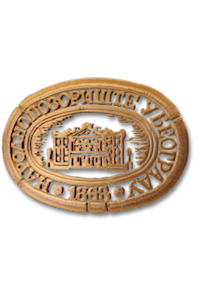CELESTE AIDA!
A Synthesis of Italian Opera Romance
Three years after Don Carlos , on July 16, 1870, Verdi wrote to a friend: "I told you I was busy. Imagine what? I'm composing an opera for Cairo! I'm not going to put her on stage: I'm afraid I'll stay down there, mummified. " However, he did not remain mummified, but on the contrary - glorified. Verdi accepted the offer of Ishmael Pasha, an Egyptian kedive, to compose a large ceremonial opera for the dedication of the new opera house in Cairo and for the opening of the Suez Canal. Archaeologist Edward Mariette Bay, known for his excavations near Memphis and Thebes, gave a summary in the form of a story. Camille di Locle, director of the Comic Opera in Paris, collaborator on the libretto by Don Carlos, dramatized the text so that, finally, Antonio Gislanconi, singer, journalist and playwright, put it in the verses of an opera libretto, with the intervention of the composer. Verdi visited Cairo and Egypt, experienced the ambience and got inspired on the spot. In four months, in an incredibly short time, in mid-November 1870, Aida 's score was completed. Decor and costumes were ordered in Paris, special "Aida-fanfares" were constructed for the great triumphal stage, the main performers were chosen, so Aida , in the new building of the Cairo Opera, was solemnly performed for the first time on December 24, 1871, with great success. That triumph was repeated at the premiere in Milan's Scala, on February 8, 1872 (thirty-two curtains!), So Aida 's winning movethrough the Italian and European opera stages was far faster than that of Verdi's previous operas (premiered at the Berlin Palace Opera on April 20, 1874, two days later at the Grand Opera in Paris, and at the end of April at the Vienna Opera). From Gislanconi, Verdi asked for a stage word, one that clearly expresses the situation, which encourages his sonic fantasy to actively express the basic human feelings and passions: joy, pain, love, hate, curse, revenge and death, to realize one musical dramaturgy, whose deepest meaning is: the representation of man in music and through music. In a tried and effective, but empty and external template of the French Grand Opera, from which Aidato a considerable extent, Verdi introduced a deeply human drama, which develops on the exciting conflicts of human passions and the tragic dichotomy between love and patriotism. A realist by his artistic method, he gives, within a romantically conceived plot, things, events and people in a concise and convincing form, in what represents their most elementary essence. In this way, Verdi's opera becomes a character opera. Despite the fact that the orchestra ceases to be just a simplified accompaniment of the melodic line and takes on drawing characters, underlining dramatic moments, evoking the mood of the landscape and the atmosphere of the stage, still, according to deep Italian tradition, the main expressive factor remains the sung melodic line. dramatic action, radiates and enriches other elements of musical-dramatic expression. Earthquake drama, Celeste Aida!








